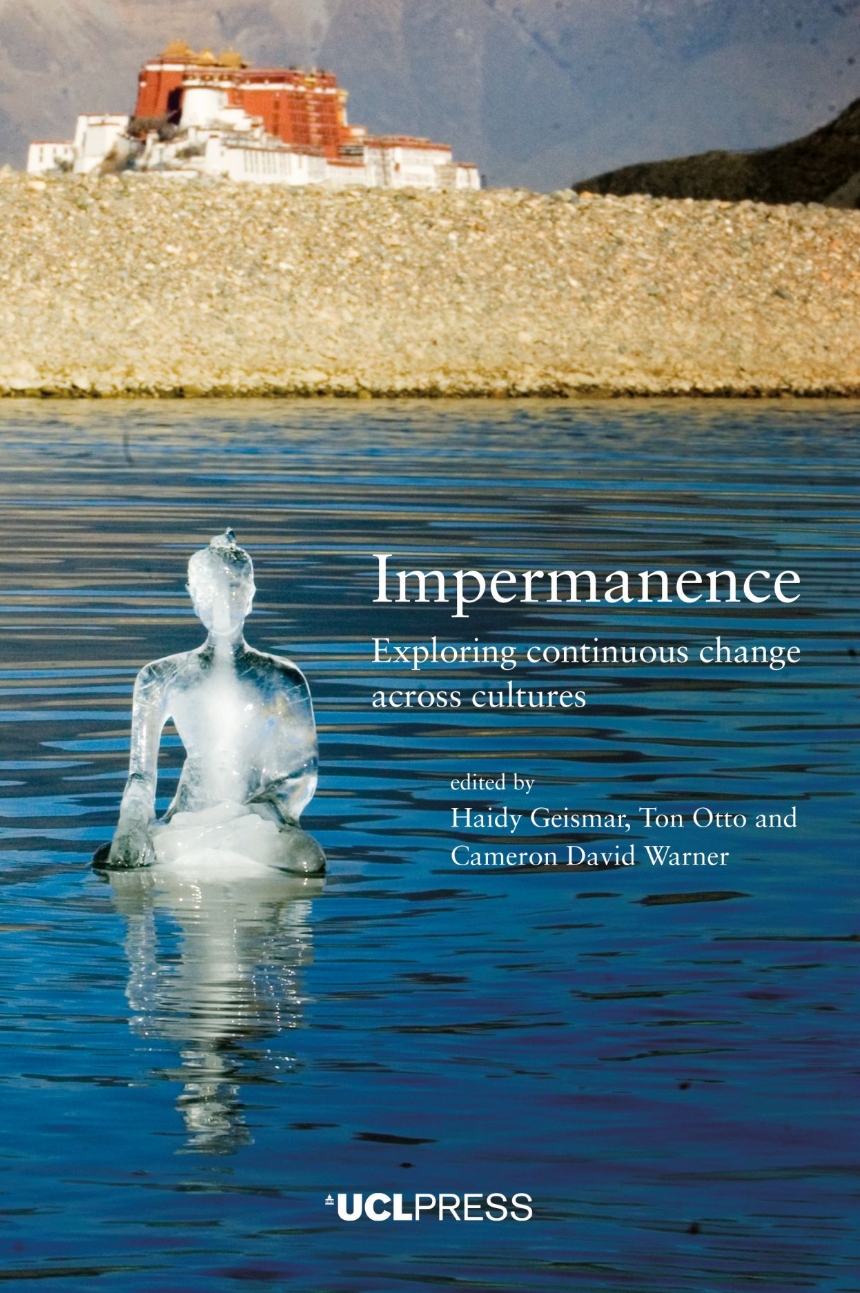An exploration of the emergent social theory of flux and transformation through dialogue with non-Western traditions of thought.
Nothing lasts forever. This common experience can be the source of much anxiety, but also of hope. The concept of impermanence or continuous change opens up a range of timely questions and discussions that speak to globally shared experiences of transformation and concerns for the future. Impermanence engages with an emergent body of social theory that emphasizes flux and transformation and brings it into a dialogue with other traditions of thought and practice, such as Buddhism, that have sustained a long-lasting and sophisticated meditation on impermanence.
In cases drawn from all over the world, this volume investigates the significance of impermanence in such diverse contexts as social death, atheism, alcoholism, migration, ritual, fashion, oncology, museums, cultural heritage, and art. The authors draw on a wide range of disciplines, including anthropology, archaeology, art history, Buddhist studies, cultural geography, and museology. This volume also includes numerous photographs, artworks, and poems that evocatively communicate notions and experiences of impermanence.
Nothing lasts forever. This common experience can be the source of much anxiety, but also of hope. The concept of impermanence or continuous change opens up a range of timely questions and discussions that speak to globally shared experiences of transformation and concerns for the future. Impermanence engages with an emergent body of social theory that emphasizes flux and transformation and brings it into a dialogue with other traditions of thought and practice, such as Buddhism, that have sustained a long-lasting and sophisticated meditation on impermanence.
In cases drawn from all over the world, this volume investigates the significance of impermanence in such diverse contexts as social death, atheism, alcoholism, migration, ritual, fashion, oncology, museums, cultural heritage, and art. The authors draw on a wide range of disciplines, including anthropology, archaeology, art history, Buddhist studies, cultural geography, and museology. This volume also includes numerous photographs, artworks, and poems that evocatively communicate notions and experiences of impermanence.
Table of Contents
List of figures List of contributors 1. Introduction Haidy Geismar, Ton Otto and Cameron David Warner Section One. Living with and Against Impermanence 2. Heavy Curtains and Deep Sleep Within Darkness Tsering Woeser 3. Disinheriting Social Death: Toward an Ethnographic Theory of Impermanence Carole McGranahan 4. Atheist Endings: Imagining Having Been in Contemporary Kyrgyzstan Maria Louw 5. Encountering Impermanence, Making Change: A Case Study of Attachment and Alcoholism in Thailand Julia Cassaniti 6. Holding On and Letting Go: Tanzanian Indians’ Responses to Impermanence Cecil Marie Schou Pallesen Section Two. States of Being and Becoming 7. A Melanesian Impermanence Joe Nalo 8. ‘We are not an emblem’: Impermanence and Materiality in Asmat Lifeworlds Anna-Karina Hermkens and Jaap Timmer 9. The Unmaking and Remaking of Cultural Worlds: The Reinvention of Ritual on Baluan Island, Papua New Guinea Ton Otto10. ’Do What You Think About’: Fashionable Responses to the End of Tibet Cameron David Warner Section Three. Structures and Practices of Care 11. Negotiating Impermanence: Care and the Medical Imaginary Among People with Cancer Henry Llewellyn 12. Caring for the Social (in Museums) Haidy Geismar 13. Transitional Sites and ‘Material Memory’: Impermanence and Ireland’s Derelict Magdalen Laundries Laura McAtackney 14. Photos and artist statement from Alison Lowry Section Four. Curating Impermanence 15. ’Neurosis of the sterile egg’: Permanence and Paradox: Museum Strategies for the Representation of Gustav Metzger’s Auto-destructive Art Pip Laurenson and Lucy Bayley 16. Culturing Impermanence at the Museum: The Metabolic Collection Martin Grünfeld 17. Screenshooting Impermanence Sarah Schorr and Winnie Soon 18. The Museum of Impermanence: The Making of an Exhibition Ulrik Høj Johnsen, Ton Otto and Cameron David Warner 19. Epilogue: On Aspiration and Absolution Caitlin DeSilvey Index

